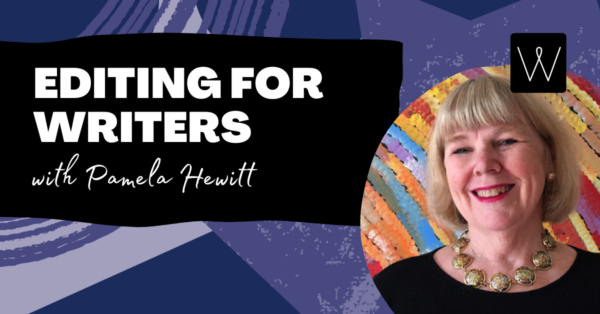
Editing can be such a daunting task, especially after finishing a whole manuscript. What’s your best piece of editing advice?
I don’t find editing daunting. I love it! (I would say that, wouldn’t I?)
That’s why my best piece of advice is to demystify the editing process by learning about it. When you embark on editing as a creative challenge, it can’t help but lift the quality of your work. You will come to understand your personal style better as you develop the tools to analyse your work.
Whether it’s focusing on unnecessary words that clutter your writing, discovering that you can adjust the pace by altering the length of sentences and paragraphs, or any one of dozens of other techniques, all writers have something to learn about editing their work.
What are the common issues in unpublished manuscripts that writers should pay attention to with their edits?
No two manuscripts are alike but you’re right. There are certain flaws that come up over and over again. They may be structural issues: problems with the way the text is put together. Editing can vastly improve a manuscript by finding the best place to start or end the entire work or perhaps a chapter. Other structural adjustments hinge on point of view, or perspective. Sometimes a manuscript can be improved by adjusting the balance between dialogue, description and action. Asking these big picture questions can throw up all kinds of ways to give your story more elegance and flair.
Sometimes style issues need tweaking. I come across dozens of style concerns, from overly formal or sentimental language to awkward verb forms and euphemisms. Individual mannerisms can be an integral part of the writer’s voice and best left as they are. At other times, though, toning down stylistic habits makes for a more professional and sophisticated manuscript.
I rarely see a manuscript that doesn’t need some trimming of redundant words and phrases. We all speak with a certain amount of repetition and this creeps into most people’s writing. It’s not a problem to throw too many words on the page to get the ideas down. The more analytical editing process lifts the quality of a piece of writing by selective pruning to reveal the essential story.
Most writers have some trouble with presentation. A common problem is the use of quotation marks in dialogue. Others include overuse of semicolons or incorrect comma placement. These minor issues are easily fixed but leaving them uncorrected pulls down the professionalism of a work of fiction or nonfiction.
What is your usual process when you sit down to start editing?
Mine is a three-stage process.
On the first pass I’m getting the feel for this particular work. I pick up everything that can be handled without taking too much time. I correct typos and grammatical mistakes and I check facts like dates and names. When I spot something where more work will be needed, I flag it. This can be anything from a paragraph that needs rewriting, a character whose speech doesn’t quite ring true or a chapter ending that falls flat.
During the second pass I nut out the problems of structure and consistency I set aside before. This is a creative process and it’s my favourite part of the process. I might come up with a set of options for the author to resolve a knotty issue of continuity or I could spend twenty minutes on a pivotal passage before zipping through pages of relatively clean text.
The third pass is when I put myself in the place of the reader. I’m looking for smooth progression, a natural flow. Now is the time to catch any mistakes that eluded me before. I’m aiming for a manuscript that’s ready to roll.
As part of the finishing touches, I run the whole thing through consistency software. Computing programs don’t replace human editors but they pull up inconsistencies in use of hyphens and capital letters, among other glitches. If the manuscript is to be published or submitted outside Australia, you can set this software to the required style for, say, US or UK readers.
Then it’s over to the writer. Maybe they will make their own final adjustments or their next step could be self-publishing or submitting to a publisher or agent.
Pamela Hewitt is an accredited editor who has worked in editing and publishing for over 25 years. After an in-house career in educational and academic editing, she established a freelance editorial practice focusing on memoir, fiction and creative non-fiction. A qualified teacher, Pamela has presented editing and writing programs for universities, vocational educational colleges, writers’ centres, and societies of editors around Australia and internationally.
Join Pamela for Online: Editing for Writers, Monday 17 June to Friday 26 July 2024, online. Enrol here >>

If you want to be the first to read great advice from our incredible tutors, subscribe to our weekly e-newsletter Newsbite.
More from Writing NSW
Check out our full range of in-person writing courses in Sydney, our online writing courses and our feedback programs to see how we can help you on your writing journey. Find out about our grants and prizes, as well as writing groups across NSW, and sign up to our weekly newsletter for writing events, opportunities and giveaways.
